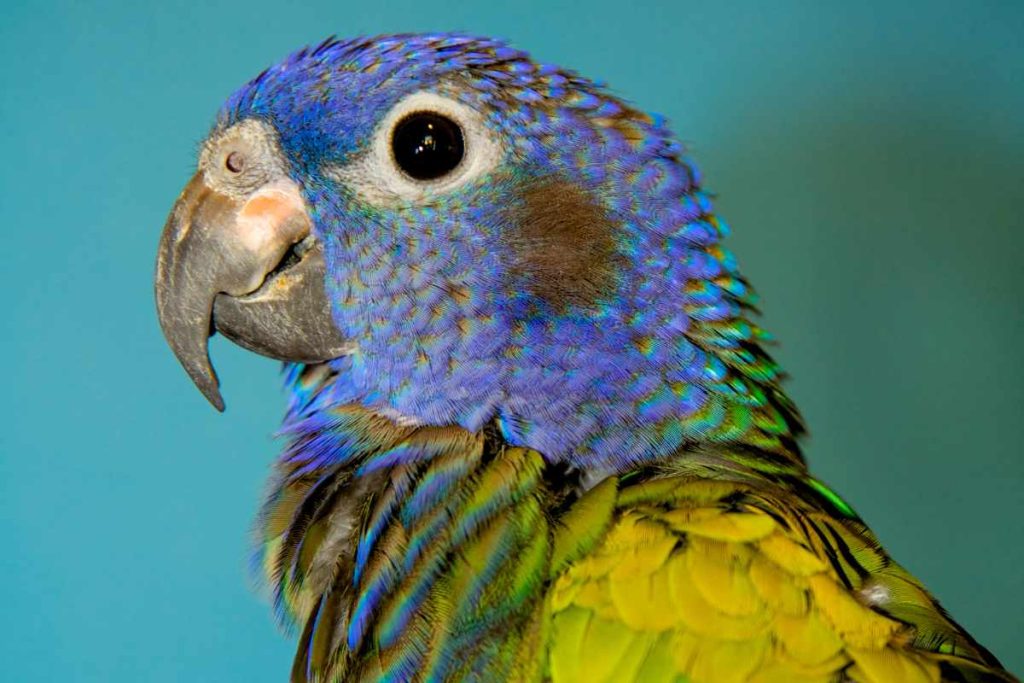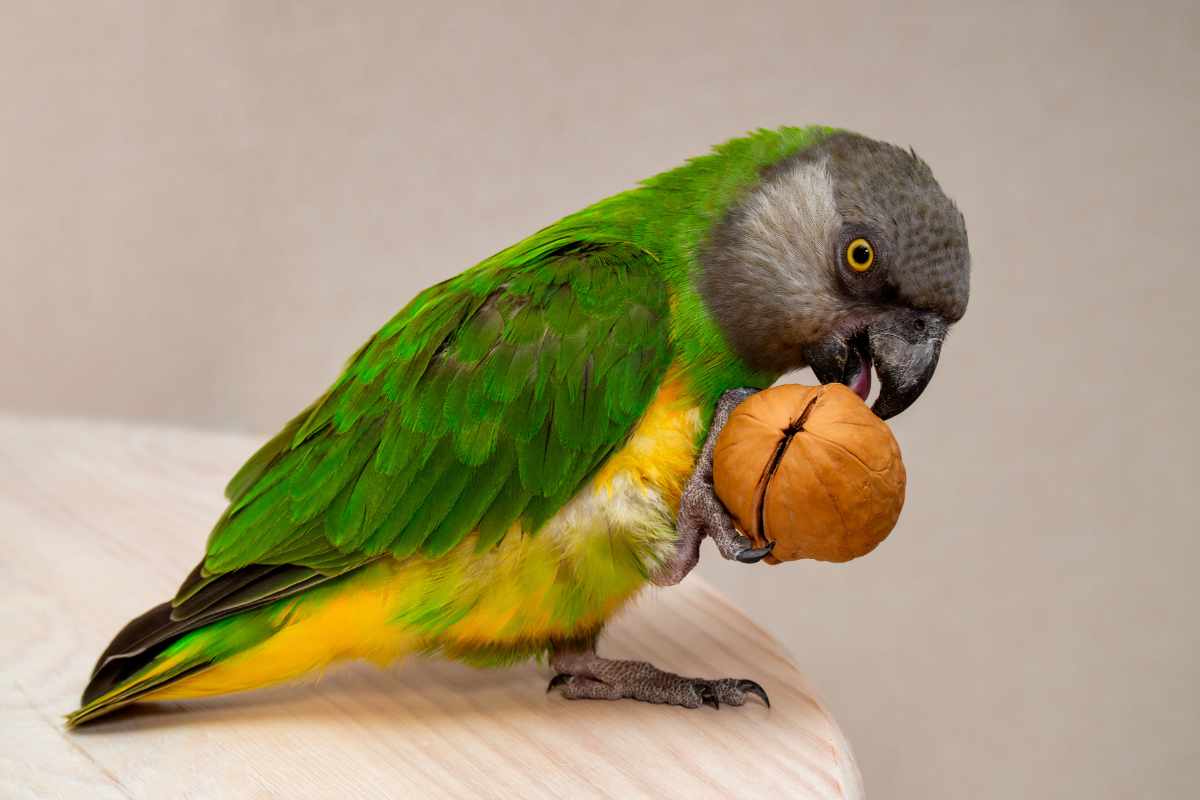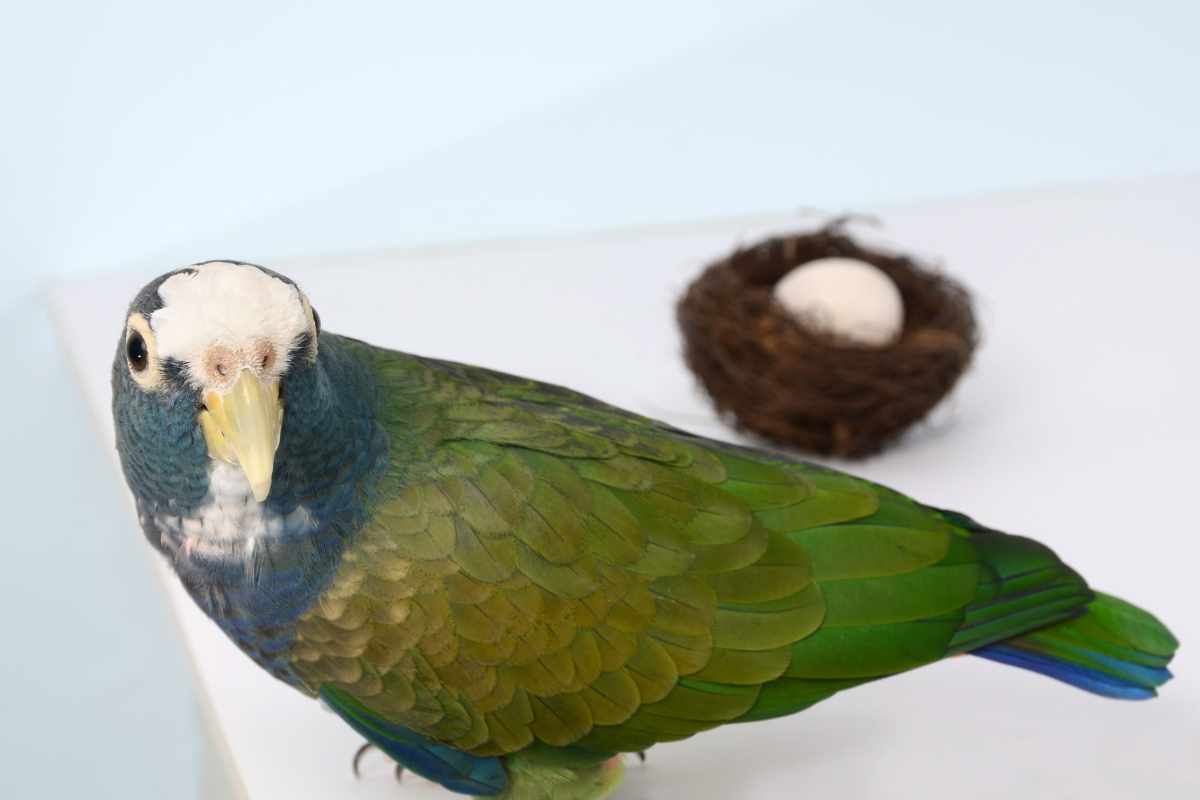- Urbaki Pets
- Birds
- Lesser-Known Parrot Species and Their Special Care Requirements
Lesser-Known Parrot Species and Their Special Care Requirements
06/10/2025 · Updated on: 08/09/2025

Parrots win us over with their color, character, and intelligence, but the spotlight usually falls on the same few species.
If you want a different avian companion that fits modern homes, these less popular species may surprise you.
Below you’ll find clear, practical profiles to understand their care needs and make a confident choice.
Species Profiles
Pionus (Pionus Parrot)
Pionus parrots are calm and steady, with a relatively quiet voice, making them ideal for apartment living when their sleep schedule is respected.
They bond closely with owners without being demanding, offering affectionate companionship. Essential care includes daily play and supervised climbing or foraging to maintain mental and physical health.
Positive reinforcement training encourages good behavior and strengthens the bond.
Their diet consists of high-quality pellets, fresh vegetables, and occasional fruits, while seeds and nuts are given sparingly.
A spacious cage (70–80 cm / 28–32 in) with climbing perches, toys, and enrichment activities is essential, along with consistent socialization and a calm environment for sleep.
Caique

Caiques are energetic, curious, and playful, often called the clowns of the parrot world.
They thrive in active households that provide games, climbing gyms, ropes, and play stands. Daily exercise of 45–60 minutes helps prevent nipping or excessive vocalization.
Early positive reinforcement trains their excitement and reduces unwanted behaviors.
Their diet should include pellets and vegetables, with nuts or seeds as occasional treats.
Caiques require a roomy cage (70–80 cm / 28–32 in) with plenty of climbing options and proper bar spacing (≈1.3–1.6 cm / 1/2–5/8 in).
Mental enrichment with puzzle feeders, foraging, and “find it” games keeps them stimulated and happy.
Senegal Parrot (Poicephalus senegalus)

Senegal parrots are intelligent, affectionate, and sometimes territorial, often forming a strong attachment to a favorite person.
They excel with positive reinforcement and require daily mental stimulation through puzzle toys and foraging to prevent boredom and resource-guarding behaviors.
Step-up and step-down training using alternating hands or perches helps reduce territorial tendencies.
Their diet should include pellets and leafy greens like kale, spinach, and broccoli, with fruit in moderation.
A large cage (70–80 cm / 28–32 in) with daily out-of-cage time and bar spacing of 1.5–1.9 cm / 5/8–3/4 in is ideal.
Maintaining predictable interaction windows and respecting 10–12 hours of sleep supports their overall well-being.
Red-Bellied Parrot (Poicephalus rufiventris)
Red-bellied parrots are initially shy but become confident and curious once secure, making them suitable for quieter homes that still offer stimulating play.
Short, consistent sessions help build confidence without forcing contact.
They enjoy toys made of soft wood, paper, and safe shreddables. Their diet includes pellets and a variety of vegetables such as kale, chard, and carrots, with small portions of fruit.
Their cage should be similar to the Senegal parrot (70–80 cm / 28–32 in), with weekly toy rotation to prevent boredom.
Regular baths or misting 2–3 times per week maintain healthy plumage, and providing high perches allows safe observation while encouraging exploration and play.
Lineolated Parakeet (Barred Parakeet, “Linnie”)
Lineolated parakeets are calm, quiet, and even-tempered, making them suitable for apartments and first-time bird owners.
They enjoy a wide cage for short flights (minimum front width 60 cm / 24 in) with plenty of climbing opportunities and narrow bar spacing (≈1–1.3 cm / 3/8–1/2 in).
Gentle enrichment, such as paper parcels, safe aromatic herbs, natural branches, and slim ropes, helps keep them engaged.
Frequent calm socialization sessions, reinforced with tiny healthy treats, strengthen the owner-bird bond.
Their diet should consist of small-parrot pellets and mixed vegetables, with seeds given only as treats.
Protecting long, uninterrupted sleep periods and avoiding bright lights or night noise supports their health and well-being.
Quaker Parrot (Monk Parakeet)
Quaker parrots are highly social, vocal, and excellent mimics, with a natural tendency for building behaviors.
Safe, shreddable, and weavable materials redirect nesting instincts, while daily interaction and basic training help manage insistent calling.
Their diet should include pellets and vegetables, with fats and seeds kept to a minimum. A generous cage (70–80 cm / 28–32 in) with out-of-cage play areas allows exploration and activity.
Quakers sleep a lot; they need 10–12 hours of sleep and consistent routines. Before adoption, check local regulations, as some regions restrict ownership.
Providing enrichment, interaction, and a predictable environment ensures a happy, well-adjusted parrot.
Why Consider Lesser-Known Parrots?
Less popular species can be quieter, easier to manage, and, in many cases, better suited to modern homes (small apartments, close neighbors, work routines).
Each one does have specific needs, though.
Understanding them helps you choose confidently and provide a full, healthy life from day one.

What “Special Care” Really Means
While all parrots require a balanced diet, mental enrichment, and social time, the how varies by species. In practical terms:
- Diet: a base of quality pellets, daily fresh vegetables, and fruit in moderation; seeds and nuts as treats.
- Housing: the largest cage possible, with species-appropriate bar spacing, multiple perches, and out-of-cage play areas.
- Enrichment: daily foraging, weekly toy rotation, and time to fly or climb.
- Routine: 10–12 hours of uninterrupted sleep, baths or misting 2–3 times a week, and daily interaction sessions.
Choosing the Right Underrated Parrot for Your Home
Match the species to your noise tolerance, daily time, space, and experience. If you want quiet companionship in an apartment, a Lineolated Parakeet or Pionus is a lovely fit.
If you enjoy high-energy play and training, consider a Caique. For deep bonds with sharp minds, look to the Poicephalus group (Senegal or Red-Bellied).
Drawn to speech and constant interaction? A Quaker Parrot can be wonderful—just check local regulations first. Start with a roomy setup, a pellet-plus-veg menu, daily foraging, and two short interaction blocks.
With patience and consistency, these lesser-known parrots will thrive—and become remarkable lifelong companions.
Did you find this post useful or inspiring? Save THIS PIN to your PETS Board on Pinterest!

Urbaki Editorial Team is the collaborative byline behind our pet-care guides. Our writers and editors turn evidence and real-life experience into clear, humane advice on training, wellbeing, nutrition basics, and everyday life with animals. Every article is planned, written, and edited by humans, fact-checked against reputable veterinary sources, and updated over time. This is an editorial pen name—see our Editorial Policy. Educational only; not a substitute for veterinary advice.





You may also like